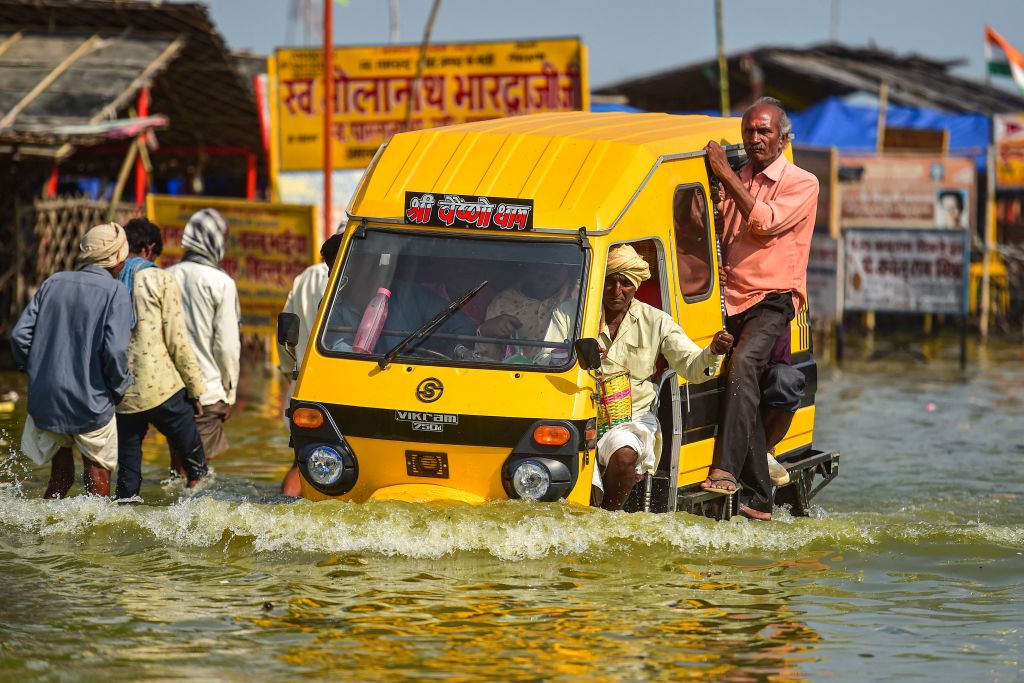- Tuesday, April 16, 2024
South Asia witnessed 12.5 million internal displacements due to disasters in 2022 with 90 per cent of the movements in the region being triggered by floods.

By: India Weekly Staff
Natural disasters, especially heavy floods and cyclones, triggered around 2.5 million internal displacements in India in 2022, according to a report by the Geneva-based Internal Displacement Monitoring Centre.
South Asia witnessed 12.5 million internal displacements due to disasters in 2022 with 90 per cent of the movements in the region being triggered by floods.
“All countries recorded flood displacement but Pakistan, India and Bangladesh were the most affected. Most movements occurred during the southwest monsoon between June and September,” the report said.
Last year, India and Bangladesh started to experience flooding even before the official onset of the monsoon season.
The north-eastern state of Assam was affected by early floods in May and the same areas were once again flooded in June. Nearly five million people were affected across the state.
Torrential rain that hit India in May also caused rivers to overflow in neighbouring Bangladesh, triggering nearly 5,500 displacements.
Storms triggered around 1.1 million internal displacements across South Asia in 2022. Cyclone Sitrang led to 66,000 displacements in the eastern coastal states of Odisha and West Bengal.
Cyclone Asani triggered 1,500 displacements in the southern coastal state of Andhra Pradesh and Cyclone Mandous 9,500 in another southern coastal state of Tamil Nadu.
The Internal Displacement Monitoring Centre further said that disaster reports in Bangladesh, India, Nepal and Pakistan tend only to be produced for medium- to large-scale events, meaning small-scale disasters that together could lead to significantly higher displacement figures are not included.
“Assessments also tend to focus on disaster damage and loss but not on displacement, so figures have to be extrapolated from housing destruction data by applying average household size calculations. When displacement is specifically reported, data only captures people in relief camps or evacuated by authorities, not those who seek shelter with host families or in informal sites, which leads to underestimates,” it said.
The frequency of extreme weather events such as floods and heat waves is projected to rise manifolds in India in the future due to climate change, according to a report by researchers at the Indian Institute of Technology, Gandhinagar, last year.
The study said the risk will increase significantly under the warming climate and variability in the El Nino-Southern Oscillation — a recurring climate pattern involving changes in the temperature of waters in the central and eastern tropical Pacific Ocean.
Climate change has increased the instability in the atmosphere, leading to an increase in convective activity — thunderstorms, lightning and heavy rain events. Cyclonic storms in the Bay of Bengal and the Arabian Sea are also intensifying rapidly and retaining their intensity for a longer duration due to global warming, according to meteorologists.
This increase in the frequency of extreme weather events is posing a challenge to forecasters. Studies show that the ability to predict heavy rainfall is hampered due to climate change, they said.
India recorded 2,227 human casualties due to extreme weather events in 2022, according to the Annual Statement on Climate of India – 2022 issued by the India Meteorological Department.
The death toll stood at 1,750 in 2021 and 1,338 in 2020, the Met data showed.
(PTI)
![]()